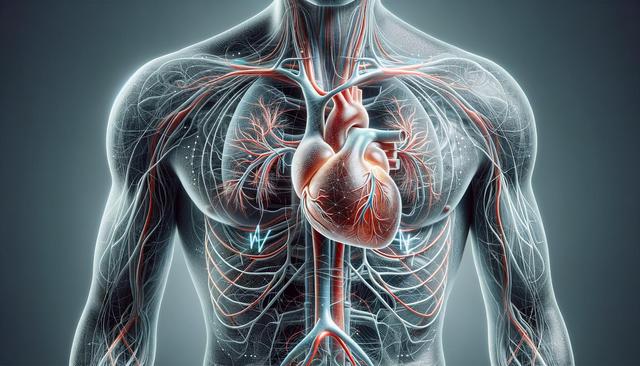
Understanding Atrial Fibrillation: What You Need to Know
What Is Atrial Fibrillation?
Atrial fibrillation, often called AFib or AF, is a common type of arrhythmia, which means an irregular heartbeat. Instead of the heart beating in a steady rhythm, the upper chambers (atria) quiver or beat chaotically. This can disrupt blood flow and lead to various complications if not managed. The condition can be occasional or persistent and may occur without noticeable symptoms in some individuals. However, when symptoms do appear, they often include palpitations, fatigue, dizziness, and shortness of breath.
There are several types of AFib, including:
- Paroxysmal AFib: Episodes come and go and usually stop on their own.
- Persistent AFib: Episodes last longer than seven days and may require treatment to stop.
- Permanent AFib: The irregular rhythm is ongoing, and efforts to restore normal rhythm are not pursued.
Understanding the nature of AFib is essential because even when it causes few symptoms, it can still increase the risk of stroke, heart failure, and other heart-related issues.
Causes and Risk Factors
Atrial fibrillation can result from a variety of underlying health conditions, lifestyle factors, and even aging. Knowing what might contribute can help individuals take preventive and proactive steps for their heart health. Common causes and risk factors include:
- High blood pressure
- Coronary artery disease
- Heart valve disease
- Diabetes
- Obesity
- Excessive alcohol consumption
- Sleep apnea
- Thyroid disorders
- Family history of AFib
In some cases, AFib can occur without any identifiable cause, especially in younger individuals or athletes. The risk of developing AFib also increases with age. Lifestyle changes and managing chronic conditions can play a significant role in reducing the likelihood of developing this arrhythmia.
Symptoms to Watch For
Not everyone with atrial fibrillation experiences noticeable symptoms, which makes regular health checkups important. When symptoms do appear, they can vary in intensity and frequency. Common signs of AFib include:
- Irregular or rapid heartbeat (palpitations)
- Chest discomfort or pain
- Fatigue or weakness
- Lightheadedness or dizziness
- Shortness of breath, especially during physical activity
- Fainting (less common)
Since these symptoms can resemble those of other conditions, it’s important to seek medical evaluation if they occur. Early diagnosis and intervention help reduce the risk of complications and improve quality of life.
Diagnosis and Monitoring
Diagnosing atrial fibrillation typically starts with a physical exam and a discussion of symptoms. Several tests may be used to confirm the diagnosis and assess the heart’s function:
- Electrocardiogram (ECG or EKG): The most common test to detect AFib by measuring the heart’s electrical activity.
- Holter monitor: A portable ECG device worn for 24 to 48 hours to capture irregular rhythms during normal daily activities.
- Event recorder: Used for longer periods to detect infrequent symptoms.
- Echocardiogram: Uses sound waves to create images of the heart and evaluate its structure and function.
- Blood tests: Help identify conditions like thyroid disease or electrolyte imbalances that can trigger AFib.
Ongoing monitoring might be necessary even after diagnosis, especially if treatment is being adjusted or symptoms change. Technology like smartphone-connected heart monitors can also help track heart rhythms more conveniently.
Treatment and Lifestyle Management
Treatment for atrial fibrillation focuses on controlling the heart rate, restoring a normal rhythm, and reducing stroke risk. The approach depends on the type of AFib, frequency of episodes, and overall health of the individual. Common treatments include:
- Medications: To control heart rate, restore rhythm, or prevent blood clots.
- Cardioversion: A procedure that uses electrical shocks to reset the heart’s rhythm.
- Ablation therapy: Targets and destroys small areas of heart tissue that are causing irregular signals.
- Pacemaker: In some cases, a device may be implanted to help maintain a regular rhythm.
In addition to medical treatments, lifestyle changes play a vital role in managing AFib. These include:
- Eating a heart-healthy diet
- Exercising regularly but within safe limits
- Limiting caffeine and alcohol intake
- Managing stress
- Quitting smoking
Adhering to treatment plans and attending follow-up appointments are crucial for effective management. With proper care, many individuals with AFib lead full and active lives.
Conclusion: Staying Informed and Proactive
Atrial fibrillation may seem daunting, but understanding the condition can empower individuals to take control of their heart health. Recognizing symptoms early, knowing personal risk factors, and seeking timely medical care are essential steps. Whether through lifestyle adjustments or medical interventions, managing AFib is possible and often highly effective. Staying informed, asking questions, and working closely with healthcare providers can make a meaningful difference in staying safe and well with this common heart rhythm disorder.


